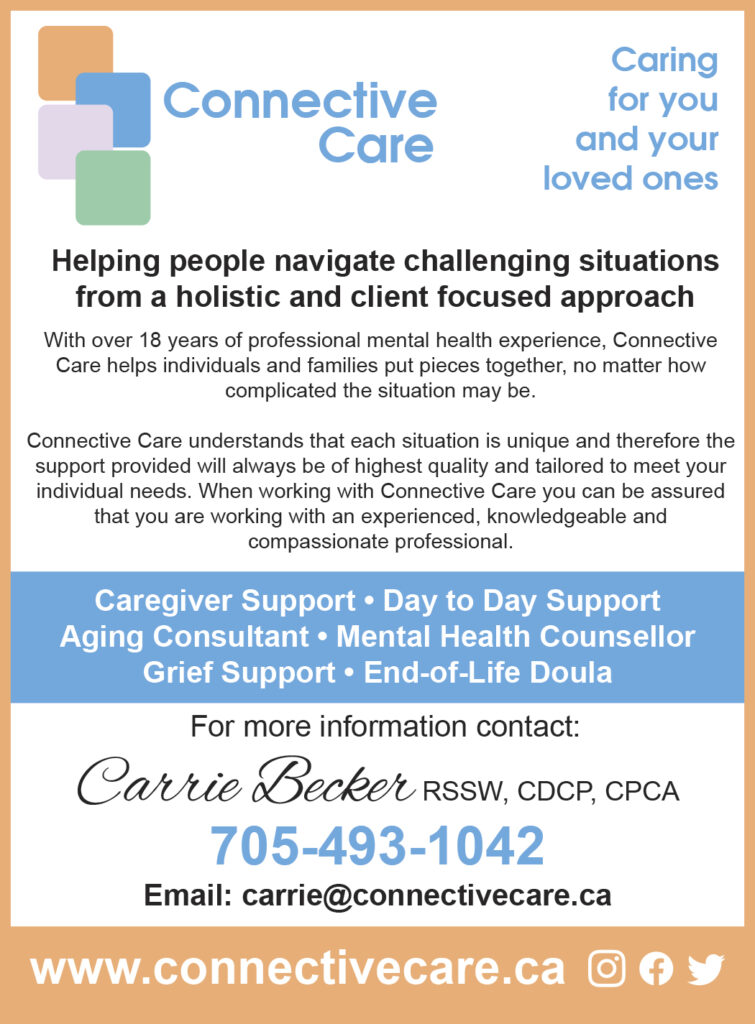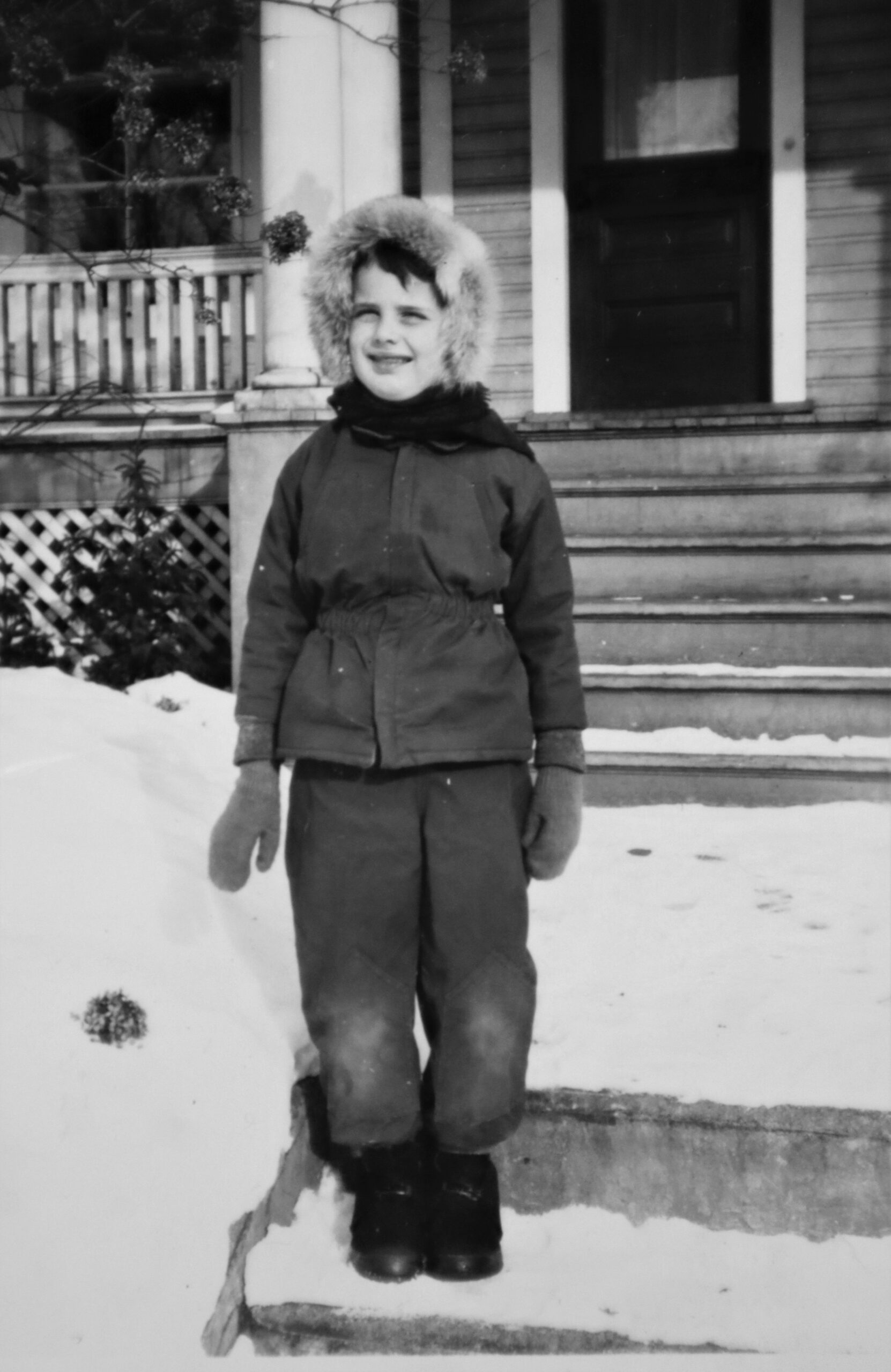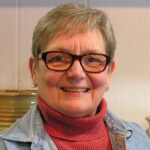When people contemplate small town life in the 1950s, there’s a nostalgic tendency to think that folks back then knew all their neighbors and that social life revolved around those people – a mental picture reinforced by movies set in that era.
So you might be surprised when I tell you that our neighborhood didn’t conform to that picture…in fact, our neighborhood wasn’t particularly friendly at all! I don’t mean that it was unfriendly either, but by unspoken mutual consent, everyone went about their lives independently.
Of course we knew who our neighbors were, who lived in what house… their kids’ names, where the man of the house worked, what car they drove, and what church they attended. But I wouldn’t have recognized more than two or three of our neighbors if I walked past them on the street. Not today. Not then. My recollections are from age three through eighteen, so an adult’s perspective might have been different.


One neighbor that I do remember was Ken Sinclair, because besides being our neighbor, he was also our family doctor. Dr. Sinclair (who looked like Walt Disney) lived right across the street which was convenient, since back then, doctors still made house calls. If I had a fever or suffered from one of the multiple childhood afflictions we all went through, mom or dad would call ‘Doc Sinclair’, and he’d trudge across the street with the ubiquitous doctor’s bag. They called it a “Gladstone bag” – a small stiff leather suitcase containing instruments to take blood pressure, listen to your heart, look in your eyes, nose and throat.
My memory of his visits are always the same. There’d be a knock at our back door, then muffled greetings and conversation with my parents as they stood in our kitchen below. Then I’d hear the footfall of Doc Sinclair making his way up to my bedroom. He’d mumble a greeting and place his bag at the end of my bed, and seat himself on the edge and mutter something like “Hmmm…we’re not feeling too well today, are we young man?”
His voice was somewhat of a low drone, which seemed to be appropriate for a doctor – somehow comforting. He’d reach into his leather bag and withdraw his stethoscope, as I waited for the cold steel to be traced around my bare chest. The scope was always cold, no matter what the season – I wondered if he kept the thing in his refrigerator! When Dr. Sinclair examined you, he’d listen to your chest and emit knowing grunting sounds as he moved it around: “Hmmm. Aaaa. Ummmph.” It sounded reassuring, which is half the battle if you’re a family doctor. Maybe they teach you to do that in medical school.


There were also times when you’d visit Dr. Sinclair at his office on Worthington Street, for regular checkups, or as I well remember, for somewhat of an emergency, as I’ll now relate. That memorable visit happened just after my sixth birthday – a detail I retain, since one of the gifts I received that year is central to this recollection. It was a harmonica (“mouth organ” as my dad called it) made of a bright lime-green plastic. For whatever reason, whenever I’d play the new instrument I also would bite it. Hard! As a result, the plastic mouthpiece cracked, which wouldn’t have been an issue had I not somehow managed to catch my lower lip in that crack, upon which the plastic sprang back, trapping my lip in the crevice. I tried to remove the harmonica to no avail – it was clamped securely on my lip, which was starting to swell rapidly. Wailing in discomfort, I ran to mom, who tried to remove it, using cooking oil, Vaseline and soap. No luck. Now I had the residue of those substances to taste too! Dad was called at his office, and he immediately drove home to find me disconsolate on the sofa. His first reaction was to laugh despite his attempt to hide his mirth. He retrieved a big set of pliers, but was afraid to do much for fear of further injuring my now red, swollen lower labium.
I was whisked to Doc Sinclair’s office, sitting glumly in our old Pontiac, attracting glances from passing motorists, then those of pedestrians as we walked from the car to the doctor’s office. In the reception area, I endured suppressed snickers of other patients populating the oak chairs which encircled the area. Dr. Sinclair’s nurse was unsmilingly ensconced behind a small desk in the waiting room, resplendent in the obligatory crisp white uniform and starched cap. Back then, doctors always had fully-uniformed nurses despite the fact that their chief function was receptionist. In any case, when the nurse finally intoned “next”, dad and I approached her. She glanced up, staring at me grimly through thick horn-rimmed glasses. She displayed no reaction whatsoever upon facing a tearful boy of six years with a strange lime-green appendage dangling on his lower lip.
She dully inquired, “Patient’s name?”
“Eehah Sonfoss”, I ventured through the plastic.
“Pardon?” said the stone-faced woman.
“Ian Saunders,” my dad translated.
“Reason for visit?” the nurse asked, deadpan.
Now, I don’t know if the good lady was dimwitted or simply needed a prescription upgrade on her horn-rims or what, but I remember wondering just how many kids with whom she had been eyeball to eyeball, sporting a harmonica locked in a death-grip on his lip. Notwithstanding, in a few moments we were ushered into Dr. Sinclair’s dark paneled inner sanctum, whereupon he was able to somehow extricate the instrument without injury to anything but my pride.
Funny though, I never felt like playing the harmonica after that.


I mentioned that we really didn’t know a lot of the neighbors particularly well, but there were definitely ones that made an impression on my young mind over the years as I grew up on the house on Copeland Street. Certainly Doctor Sinclair was one of those. Another that comes to mind was Judge Plouffe. The gentleman in question lived four doors down from us at 658 Copeland Street, right beside the house where my best friend, Billy Tregenza lived. His full name was Joseph Adze Symaune Plouffe, and he was a local distinguished jurist in North Bay until he passed away in 1964. We would see Judge Plouffe every day, regular as clockwork, stroll past our house as he made his way to the court house on Bye Street, a short connector between Copeland and Main street, renamed Plouffe Street in his honor following his death.
The judge, always clad immaculately in black, with a matching homburg hat atop his head, would placidly make his way to his office, puffing thoughtfully on his pipe as he passed. If he encountered someone enroute, he would bow slightly toward that person and bid a grave yet pleasant “Good day to you, sir”, even if the “sir” in question was astride a three wheeler.
We would of course see him make his way back along our street toward his residence in the late afternoon. The house that he and his family lived in was a pleasant but undistinguished two story yellow brick house. I recall that his front lawn had a large nut tree in the center of it, a variety that I’ve never seen before (or since). The nuts it produced were about the shape, size and color of a lime, with a hard fibrous shell that had an intriguing sweet lemony smell. My friend Billy and I would gather these for some inexplicable reason…maybe because they did smell so good. I still have no idea what kind of tree it was – perhaps some variety of walnut, although North Bay would be a bit out of its normal growing zone.
I’d love to hear feedback (and your stories) from readers, so contact me at: iantsaunders2018@gmail.com







